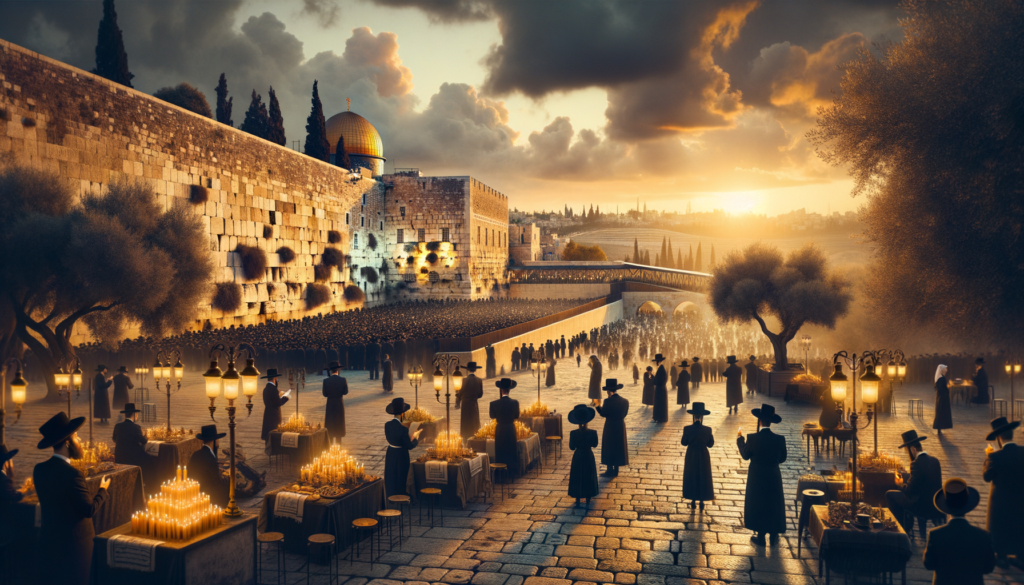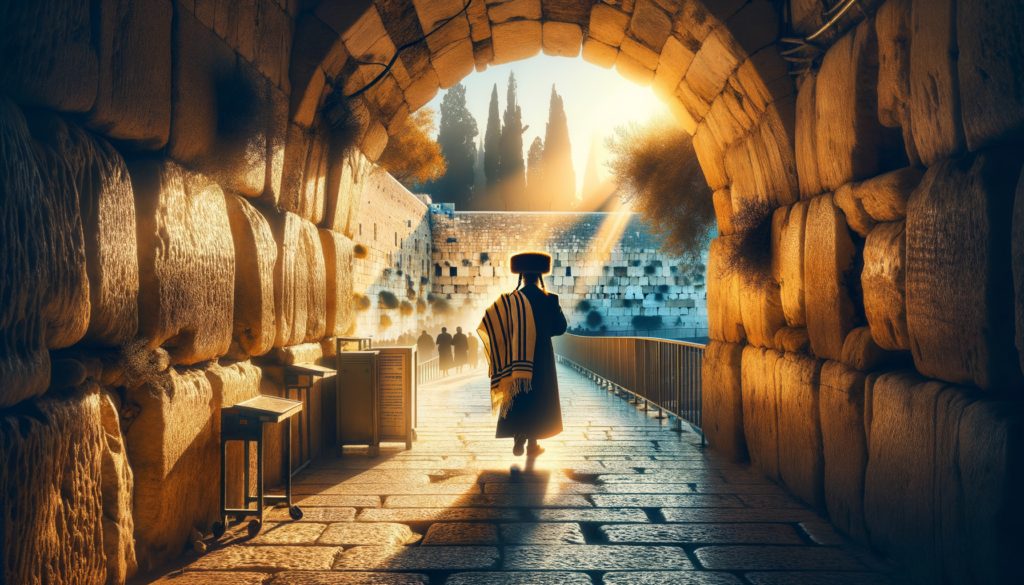10 Surprising Facts About the History of the Western Wall

The Western Wall, known in Hebrew as the Kotel, is one of the most recognized and emotionally resonant sites in the world. For centuries, it has been a symbol of heritage, survival, and unwavering hope for the Jewish people. While many recognize its iconic image, its long and complex history is filled with surprising details. Join us as we explore ten lesser-known facts about this ancient and sacred structure, uncovering the deep layers of its story.
This is one of the most common misconceptions. The Western Wall was not one of the four walls of the actual Temple sanctuary. Instead, it was one of the four massive retaining walls that King Herod the Great built around 19 BCE to expand the plaza on which the Second Temple stood. He undertook this colossal construction project to create a larger, more magnificent platform, and the Western Wall supported the western side of this Temple Mount platform. Its sanctity comes from its proximity to the location where the Temple’s Holy of Holies once stood, making it the closest accessible remnant of that sacred space.
The familiar image of the Western Wall shows only a fraction of its true size. The visible section is about 60 meters (200 feet) long and 19 meters (62 feet) high. However, archaeological explorations have revealed that the wall continues deep underground. Its total height from its foundation is estimated to be around 32 meters (105 feet), meaning nearly half of it is hidden from view, buried by the accumulation of debris and new construction over two millennia. The Western Wall Tunnels allow visitors to walk along these hidden sections and marvel at the sheer scale of the ancient structure.

The construction of the Wall is a marvel of ancient engineering. It was built from enormous blocks of limestone, many of which weigh between 2 and 8 tons. The largest single stone, known as the Western Stone and located in the underground tunnels, is estimated to weigh an astonishing 570 tons. These stones were cut with incredible precision and placed without any binding material like cement. Even today, engineers are astounded at the methods used to move and position such massive stones using only ancient technology.
For centuries, the site has been known in many languages as the ‘Wailing Wall.’ This name was given by non-Jewish observers who witnessed the poignant sight of Jewish people praying and mourning the destruction of their Temple at the site. However, the original Hebrew name is simply ‘HaKotel HaMa’aravi,’ which translates to ‘The Western Wall.’ For the Jewish people, it is a place not just of mourning, but of hope, prayer, and deep spiritual connection. Today, the term ‘Wailing Wall’ is considered outdated and less respectful, with ‘Western Wall’ or ‘Kotel’ preferred.
One of the most touching traditions at the Kotel is the practice of placing small, folded slips of paper containing written prayers into the cracks between the stones. This custom is believed to be at least 300 years old. Over time, it has even adapted to modern technology—today, people from around the world can send prayers electronically, which are then printed and placed into the Wall on their behalf. Twice a year, the notes are collected and respectfully buried on the Mount of Olives, making way for new prayers.
The Western Wall is considered the most sacred accessible site of prayer for the Jewish people. Its holiness is derived from its direct connection to the Temple Mount, which is the holiest site in Judaism. As the closest point to the former location of the Holy of Holies (the inner sanctuary of the Temple), it has been a focal point for Jewish pilgrimage and prayer for centuries.
After the Romans destroyed the Second Temple in 70 CE, the Temple Mount itself became largely inaccessible for Jewish prayer. Over time, this specific remnant of the outer retaining wall, the Western Wall, became the primary location where Jews would gather to remember the glory of the Temple and pray for its restoration. By the Middle Ages, the Kotel was firmly established as the holiest accessible place for Jews to pray, even as Jewish communities were scattered across the world.
For many centuries, the area directly in front of the Wall was a narrow alleyway within a residential neighborhood. The large, open plaza that exists today was created after the Six-Day War in 1967, when Israel regained access to the Old City of Jerusalem. The houses in front of the Wall were removed to create a space that could safely accommodate thousands of visitors and worshippers. Today, the plaza serves as a site for national ceremonies, bar and bat mitzvah celebrations, and communal prayer.
If you look closely at the upper reaches of the Wall, you’ll notice a surprising amount of life. Swifts and doves often nest in the ancient crevices, their calls a constant companion to the prayers below. Additionally, hardy plants like caper bushes and fig saplings have taken root between the stones, creating a natural tapestry that connects the monument with the land of Israel itself. For many, these plants are a metaphor for Jewish resilience and the persistence of life in the most sacred of places.
More than just an archaeological artifact, the Western Wall is a living, breathing center of Jewish life. It is a site for personal prayer, communal celebrations, and national ceremonies. It stands as a powerful, physical link between the Jewish past, present, and future—a symbol of a heritage that has persevered through the ages. Generations of Jews, from distant lands and under vastly different circumstances, have turned toward the Kotel as a focal point of identity and hope.
The Western Wall in Jewish Liturgy
The Kotel is not only a physical site but also a spiritual symbol deeply woven into Jewish prayer. For centuries, Jews have prayed facing Jerusalem and, by extension, the Temple Mount and the Western Wall. References to Zion and Jerusalem in the daily Amidah prayer, in Psalms, and in festival liturgy all carry echoes of the longing for this place. Thus, the Wall lives in both the physical and spiritual landscapes of Jewish tradition.
The Western Wall Tunnels and Archaeological Discoveries
Excavations along the Wall have revealed incredible insights into the Second Temple period. The Western Wall Tunnels allow visitors to walk the length of the Wall beneath the Old City, revealing the massive stones and ancient streets once bustling with pilgrims. Archaeologists have found mikvehs (ritual baths), marketplaces, and even inscriptions that provide a vivid picture of Jewish life during the Temple era. These discoveries continue to deepen our understanding of the site’s history and significance.
The Western Wall in Modern History
The Six-Day War of 1967 marked a turning point in the modern story of the Western Wall. For nearly two decades prior, Jews had been denied access to the site while the Old City was under Jordanian control. When Israeli paratroopers entered the Old City and reached the Wall, their emotional prayers and tears became one of the defining images of the war. Since then, the Wall has served as both a national and spiritual symbol of Jewish unity and resilience.
A Global Symbol for the Jewish People
Today, the Western Wall is not only a central site in Jerusalem but also a global symbol of Jewish faith and identity. Millions of Jews from around the world visit the Kotel every year, whether physically or virtually, to connect with their heritage. From bar mitzvah celebrations to state visits by world leaders, the Wall represents a meeting point of the personal, the communal, and the universal. It embodies the idea that despite centuries of exile and hardship, the connection between the Jewish people and Jerusalem remains unbroken.



